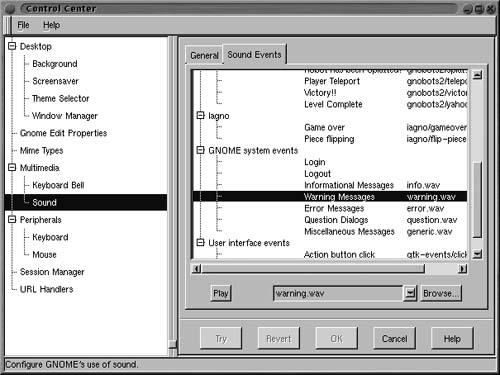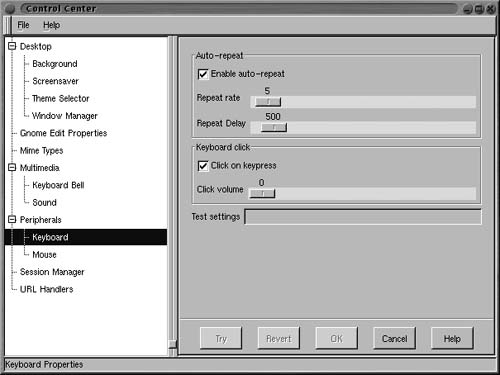Working with Virtual Desktops
Gnome incorporates the concept of virtual desktops. Virtual desktops provide a cheap way to extend the available screen real estate. Each virtual desktop can have many open windows—more than would fit on one desktop.
To navigate among virtual desktops:
1. | On the Gnome panel, locate the Virtual desktop console (Figure 3.14). The console displays a small representation of each desktop with its open windows. |
2. | Click the representation of a desktop to open that virtual desktop or use the mouse to move off the current screen to the next virtual desktop. |
Eliminating virtual desktops
If virtual desktops disturb you, you might want to eliminate all but one of them.
Note
There's a small but noticeable performance drop when you run multiple desktops.
To eliminate all but one desktop:
1. | Use the Gnome Control panel to open the Configuration Editor in the Window Manager pane. |
2. | With the Configuration Editor open, select Desktops from the list at the upper left. |
3. | |
4. | Click OK. |
To enable multiple desktops:
1. | With the Configuration Editor open, select Desktops from the list at the upper left. |
2. | Use the thumbs of the slider to indicate the number and positioning of the multiple desktops you want (Figure 3.16). |
3. | Click OK. |
Figure 3.14. You can navigate between virtual desktops using the Virtual desktop console on the Gnome panel.

Figure 3.15. Use the sliders to eliminate multiple desktops.

Figure 3.16. You can use the sliders to determine the number and positioning of virtual desktops.

Figure 3.17. Check GNOME Sound Support to enable sound.

Figure 3.18. Using the Gnome Control Center, you can associate sounds with events.

..................Content has been hidden....................
You can't read the all page of ebook, please click here login for view all page.
